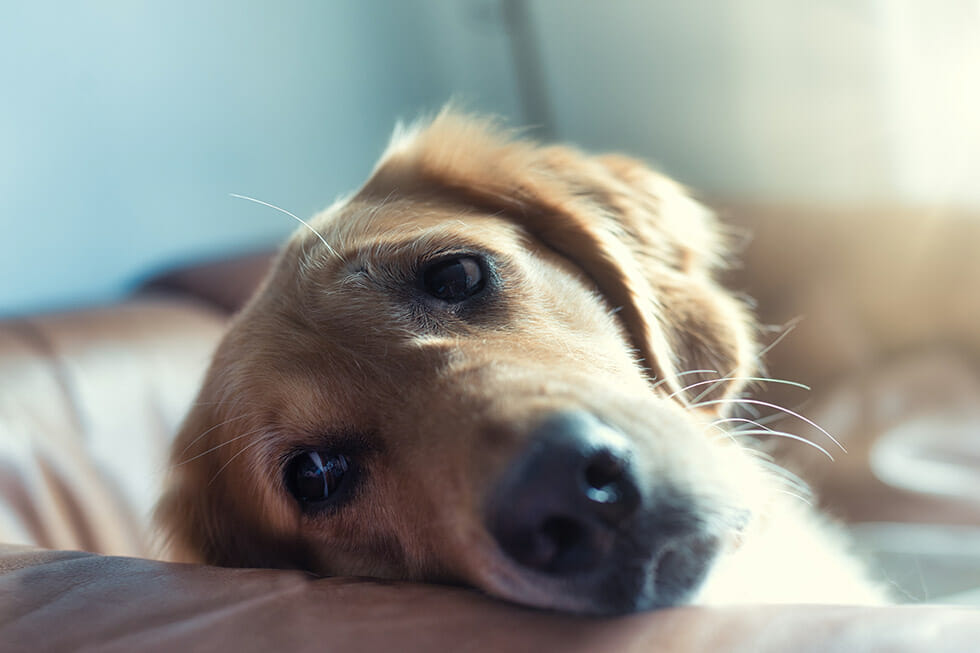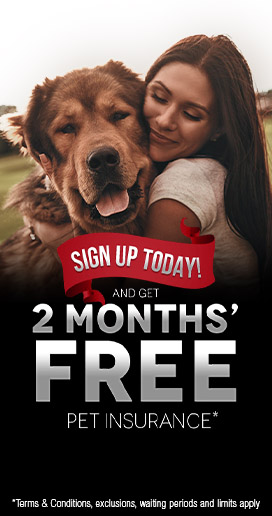
How to Know if Your Dog Has Separation Anxiety
The triggers may vary from person to person, but anxiety affects many people on a daily basis. If you have ever experienced anxiety, you know it is an unpleasant and unwelcome feeling.
Unfortunately, anxiety is not limited to people. Dogs may be afflicted with anxiety as well including separation anxiety that manifests in a multitude of ways when they are separated from their owners. We love our dogs and would do anything to give them a happy, healthy life, so we want to do everything we can to manage their anxiety and calm them when possible.
What causes separation anxiety?
It is unclear why some dogs suffer from separation anxiety while others do not. Some dogs show signs of separation anxiety as puppies while others present signs later in life.
There are some situations that have been associated with the onset of separation anxiety in dogs:
- Change of schedule
- Change of residence
- Addition of a new member to the household
- A household member leaving the residence temporarily or permanently
- Addition of a new pet
- Another pet leaving the home temporarily or permanently
These scenarios may contribute to separation anxiety and have a negative impact on your dog’s health and wellbeing. We must pay careful attention to their behavior to determine if they are suffering from separation anxiety.
Here are the most common symptoms of separation anxiety your pet may display when they notice you leaving.
Barking, Crying, or Howling
A dog that anticipates being left alone may bark, cry, or howl, sometimes even long after you’ve shut the door behind you. This is not great for your dog’s well-being, and especially bad for your neighbors.
If your dog is normally the quiet type but causes a ruckus when you walk out the door, separation anxiety may be the culprit.
Chewing
A dog teeming with separation anxiety needs an outlet to alleviate the bad feelings and may chew anything and everything they can get ahold of. This may include furniture, carpets, clothing, shoes, door frames, papers, or other prized possessions.
They may also take out their anxiety on themselves by excessively chewing down their nails and on their skin, sometimes to the point of injury.
Going to the Bathroom Inside
If you come home to an unwelcome surprise on your carpet courtesy of your special four-legged friend, it may be a manifestation of separation anxiety. Accidents like this are especially troubling if your dog is housebroken and rarely or never goes in the house.
A housebroken dog that frequently has accidents indoors may also have underlying medical conditions. We recommend consulting your veterinarian if your dog is prone to accidents, as only the vet can determine if it is a result of anxiety or a medical problem.
Escaping
Whether your dog is confined to a crate or playpen or free to roam the home in your absence, they may try to escape when they are anxious. They try chewing through crate bars, scratching through doors, or even breaking through windows out of panic and desperation. Some dogs are even known to unlock their crates and get free, wreaking havoc on the home in your absence.
These anxious behaviors can result in property damage and injuries to your dog.
How to Alleviate Separation Anxiety
Managing a dog with separation anxiety can be challenging, but there are many ways to help reduce their stress and associated anxious behavior.
Take Them Out
Taking your dog out for a fun day may not only help to address their separation anxiety but will also help them become less fearful of new people and places.
Going for a jog? Take your dog out with you for some exercise. Going to the pet store? Your dog might love a car ride and a visit to this special, pet-friendly place! Taking the bike out for a spin? Try adding a dog basket for your bike and bring your little buddy along for the ride!
Taking the dog out will provide physical exercise and mental stimulation, which will help them be more accepting of your leave.
Hire a Dog Sitter
Your dog prefers you over anyone else, but at least having someone in the house is enough to ease their anxiety. Arrange for a family member, friend, or dog sitter to come and keep your dog company while you’re out.
Even a brief visit can go a long way in soothing your furry friend.
Enroll Them in Doggy Daycare
If your dog enjoys socializing with other pooches, doggy daycare can be an excellent alternative to leaving your pup home alone. At daycare, they have the benefit of being with both people and other dogs to keep them company and play with them. You will also have the added benefit of picking up a dog who has been engaged and exercised, so you can both get home and relax after such a busy day.
Counterconditioning
Counterconditioning is a great way to change your dog’s perception of you leaving. Instead of associating it with fear, anxiety, and solitude, they can learn to associate it with a tasty treat or favorite toy.
Offer your dog a special food, treat, or toy that they may only have right before you leave. KONG toys are excellent for this, as the dog will have to work at getting the treats out and it will occupy their attention for a short period of time. Stuffing cheese, peanut butter, or dog cookies inside are all excellent ways to make use of the KONG.
Counterconditioning will help to create a positive association between you walking out of the door and them being rewarded with something delicious or fun and may provide relief to dogs that suffer from separation anxiety.
Consult an Expert
For dogs with severe separation anxiety that manifests in aggression or highly destructive behavior, it’s best to consult your veterinarian, a certified dog trainer, or animal behaviorist.
A vet can offer medication to manage harmful behaviors, but it’s no panacea and may not be advised for all situations.
Trainers and animal behaviorists, on the other hand, will help you set up a plan that works with their anxiety and gradually desensitizes them to its triggers. Addressing severe anxiety takes a lot of time and patience, but can be managed with a smart approach.
An expert will be invaluable in guiding you through the process.
Conclusion
Remember– your dog is not behaving inappropriately because they’re malicious or “bad dogs.” They simply lack the tools to work through their anxiety in a healthier way.
When addressing your dog’s separation anxiety, it is important to stay calm and consistent in your approach.
Follow our tips and you may manage your dog’s anxiety to give them a happier, healthier, and calmer life!
Photo by REGINE THOLEN
Get the latest Pet Insider Tips & News
We offer award-winning* pet insurance policies to protect your furry friend’s health and wellbeing. Get a quote today and give your pets the care they deserve.
Archives
Categories
- Cat Care (64)
- Cats (1)
- Dog Care (124)
- Guides (28)
- Health and Nutrition (200)
- Lifestyle and Activities (219)
- Media Release (24)
- Pet Care (246)
- Rescue Dogs (1)

